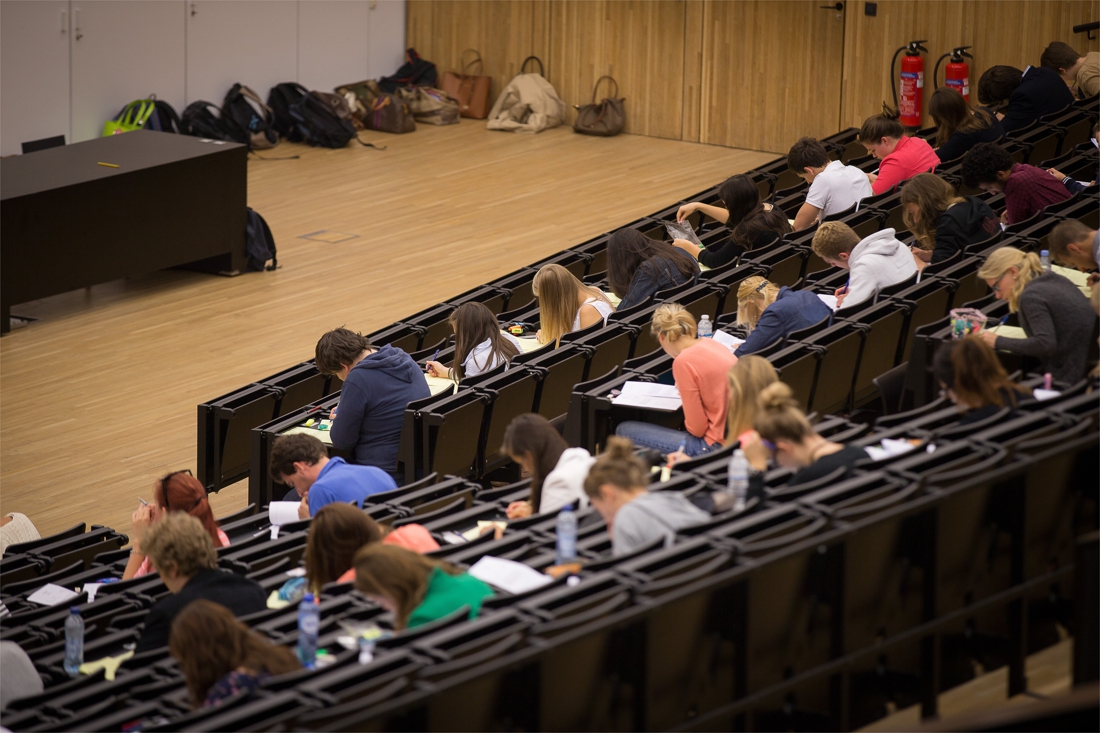The educational activities at the University of Ghent, Antwerp and Hasselt will not start this academic year in code yellow, but in code orange. The change means, among other things, that the capacity in the auditoriums will drop from one in two to one in five.
–
A few days before the start of the academic year, the universities in Ghent, Antwerp and Hasselt decide not to start up in code yellow, but in code orange. ‘We know very well that this is not an obvious message’, it says in a message from Ghent University. ‘We owe it to ourselves, to each other and to society as a whole to tighten up the measures now,’ says Rector Rik Van De Walle.
Ghent University has been starting in code orange for at least four weeks. ‘A lot of students already received their timetable. There is a very real chance that this will have to be adjusted soon ‘, it sounds.
The UAntwerp will also start up in code orange. ‘This substantially reduces the circulation of young people in the city: after all, the University of Antwerp is good for 22,000 of the 50,000 higher education students. Our decision can contribute to the virus spreading less and to prevent secondary education from having to compromise further, ‘said Rector Herman Van Goethem in an email sent last night.
At Hasselt University, the switch to code orange will be for an indefinite period – probably already in the first semester. As a small university, Hasselt University already started in orange, but is now also officially doing so, rector Bernard Vanheusden confirms. ‘The decision is made. We already have a lot of teaching in practicals and small groups anyway, so the problem is less serious for us. Nevertheless, we are now going to focus more on streaming the lectures. ‘
No surprise
The three universities deviate from the agreements made in August. Then, among others by Minister of Education Ben Weyts (N-VA), a plea was made to open all education levels in code yellow. That was already the case in the lower in the secondary.
However, the situation has changed radically, now that the number of infections has risen sharply. ‘The corona figures are again heading in the wrong direction,’ says Van Goethem. ‘The number of infections is increasing sharply, especially in young adults. And those young adults, that’s the target group of the universities. ‘
Van De Walle also makes the same conclusion. ‘Our university must and wants its responsibility. The past few days have shown that vigilance with regard to the corona virus is required. ‘ The Ghent rector has also been publicly concerned for some time. A few days ago he tweeted ‘NVRnu’ or ‘National Security Council now’. The rector also signed an open letter – together with Piet Hoebeke (Dean of the Faculty of Medicine) and Frank Vermassen (chief physician at UZ Gent) – asking for more transparency and clearer corona figures.
It is not yet known what other universities and colleges will do. Although each institution itself determines the color code, the pressure on KU Leuven and VUB is certainly increasing. The Erasmushogeschool in Brussels also indicated a few weeks ago that it will start ‘between yellow and orange’. ‘Because the contamination rate in Brussels remains high, we will reserve contact moments for teaching methods that are difficult to take digitally. Many young people simply come to our buildings by tram or metro, ‘said director Ann Brusseel at the time.
What does code orange mean at the university?
The colleges and universities follow the color coding system that is also used in primary and secondary education. If higher education opens in yellow in code, this means an occupancy of one in two in the auditoria. With code orange, the capacity decreases to 1 in 5. With code yellow, the circulation to and from the university college campus may be a maximum of 75 percent, with code orange this can be a maximum of 20 percent of the students.
In auditoriums and classrooms, classes take place at a occupancy rate of one in five with a mouth mask.
Education in small groups (50 people or less) can continue with an occupancy rate of one in two with a mouth mask or one in five without a mouth mask.
Lab exercises and practicals can take place in a one-on-one occupation level with a mouth mask.
Work and study places (50 people or less) are organized in such a way that a distance of 1.5 meters is guaranteed, so that the wearing of mouth masks is not necessary.
– .

